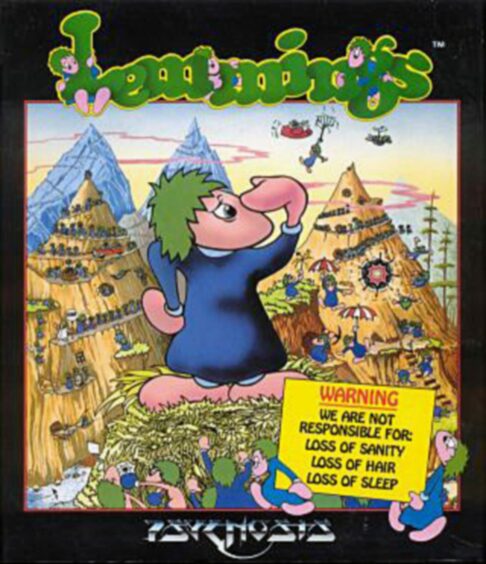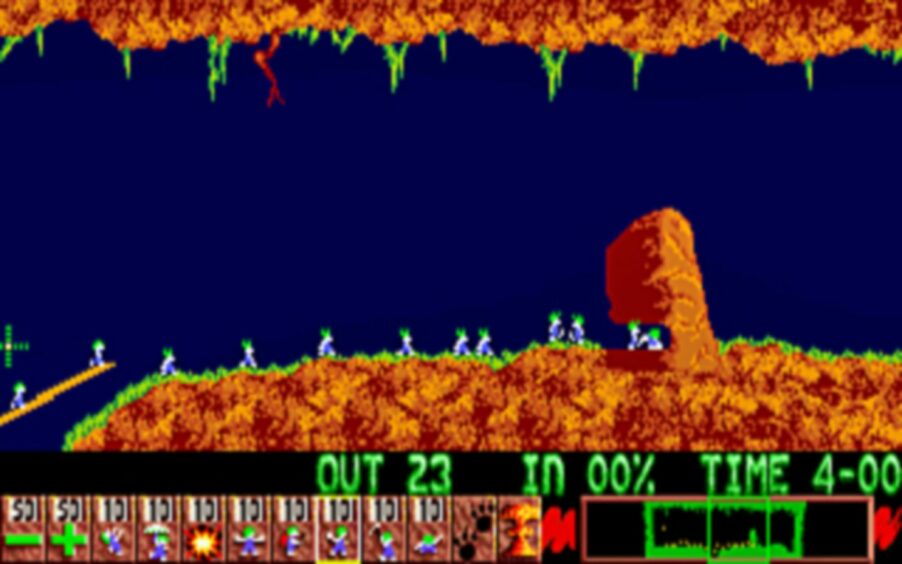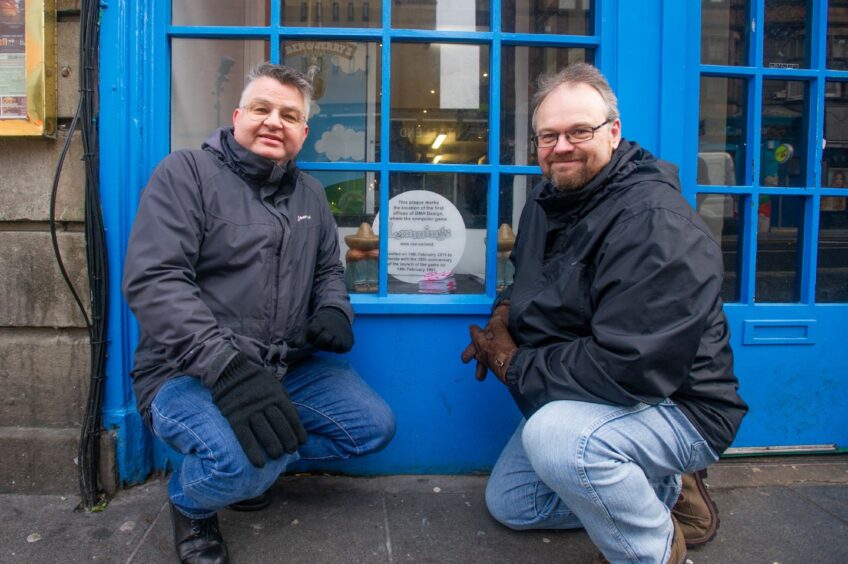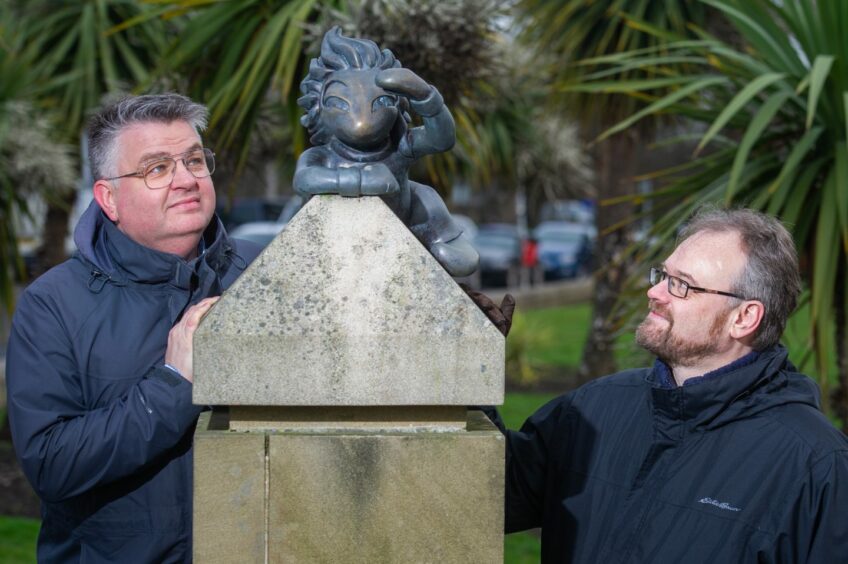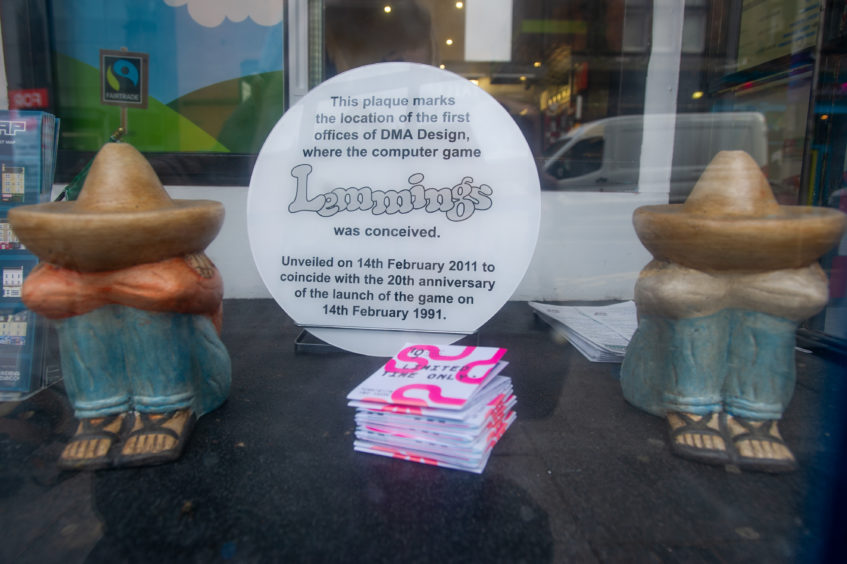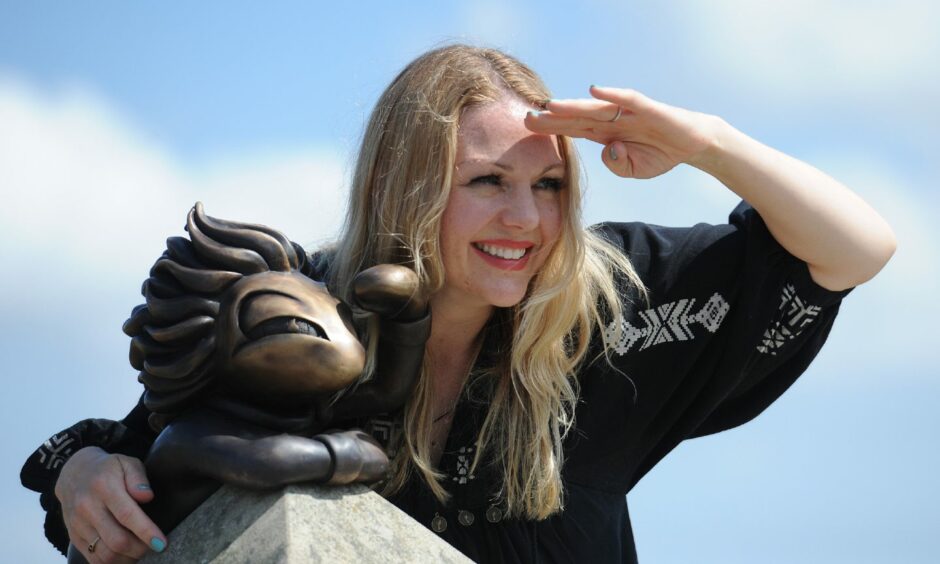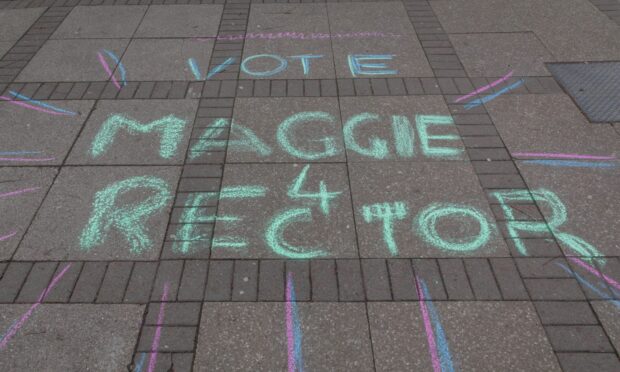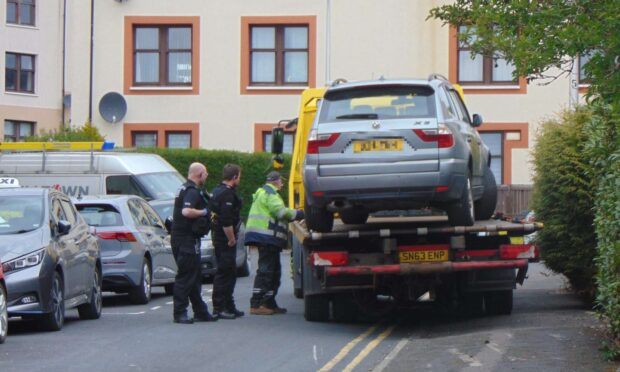Michael Alexander speaks to the team behind a brand new feature-length documentary on the history and legacy of Lemmings – the iconic computer game still going strong 30 years after it was created in Dundee.
Dundee becoming the Hollywood of the computer games industry was not something that a lot of people saw coming 30 years ago.
But as a new documentary shines a light on the design, development and legacy of Lemmings – the first videogame from Scotland to achieve huge international success – the role played by the city is being celebrated.
Released on February 14 1991, Lemmings was originally developed by DMA Design in Dundee, and quickly became a stalwart of the ‘Britsoft’ scene.
Hand-carved by a small team of developers working above a restaurant at Seabraes on Perth Road, the game challenged players to guide as many suicidally-inclined tiny mammals as they could safely through a perilous landscape which offered numerous opportunities for sudden, gratuitous and instant death.
Players had to use the skills of different lemmings – builders, blockers, floaters, etc – to overcome obstacles and guide as many of their group to the exit.
It was first published for the Commodore Amiga by Liverpool-based Psygnosis in 1991 and has made its way to many other platforms since, including Sony’s PlayStation (and more recently mobile).
It’s estimated to have sold around 20 million copies between its various ports with many retrospective reviews placing the game in their own lists of the greatest games of all time.
Documentary celebration
The documentary, Lemmings 30th: Can You Dig It?, celebrates this icon of Scottish and UK games culture by speaking to the people behind its original success, while also celebrating its legacy in gameplay.
It’s directed by leading videogame film producer Richard Wilcox of That Video Company and commissioned by Exient, the company behind the mobile version of the game.
Jamie Wotton, creative marketing manager at Exient told The Courier how the documentary makers were excited to help celebrate the 30th birthday of Lemmings, which has to be “one of the most-loved games ever made”.
His pitch for the film was essentially “here’s the last 30 years of Lemmings, now, what is the next 30 years of Lemmings going to look like?”
“It’s a game that has touched the hearts of so many fans, old and new, so with the documentary we want to give them something special in recognition of the impact Lemmings has had on global games and games culture,” says Jamie.
“The documentary has grown in scope since the idea first came about.
“We initially wanted to have quite a concise recap style – almost like a ‘do you remember this?’ talking heads type documentary.
“But over time and just speaking to the guys involved, we were able to build up these rapports and we were able to build up this big contributor list of everyone involved and tried to hit everyone and people credited.
“We pencilled in for half hour meetings. We were getting 2.5 hour calls out of them. They were just so energised to tell their side of the story.”
Humble roots
Jamie finds the humble roots of Lemmings “fascinating”.
The origins of the game – and indeed Dundee’s computer games industry – came out of the then Kingsway Amateur Computer Club in Dundee where Russell Kay and other future work mates met as teenagers.
Following the establishment of DMA Design in 1987 by Dave Jones who soon hired former classmates Mike Dailly, Steve Hammond and Russell, the potential for what became Lemmings was spotted one day following an argument about how small a character sprite could be and how many ways it could be killed.
“It was definitely of its time,” Russell, told The Courier last year, putting Lemmings’ success down to its “simplicity” and the time given to “polish” the concept after initially being rejected by publishers.
Putting the success of Lemmings down to the “brilliant mix of frustration and satisfaction”, Jamie says one of the fascinating aspects speaking to younger people on the team who grew up playing Lemmings, is that they rarely played it alone. They would play with family members.
How did the game develop?
Jamie explains how the documentary is essentially broken into 16 chapters. It starts at the very beginning from the developers setting up DMA through the evolution of how the levels were designed, how the animations were put together, what challenges they had and who was involved in the music.
At the same time, Jamie says, they were conscious “not to make it the most dry documentary in the world”, because speaking to programmers, he adds, can end up in a “very technical” place!
It’s therefore been interspersed with stars, games legends, developers, players and fans from across the games universe, recalling what they remember about Lemmings to “spice it up”.
Guest stars include Adrian Powell (original Lemmings cover artist), Chris van der Kuyl (developer and Kingsway Club alumni), Eli Mouawad (streamer), Ryan Locke (Abertay University), Peter Molyneux (games industry legend) and screen writer and journalist Gary Whitta, who famously wrote the screenplay for the first draft of Rogue One: A Star Wars Story.
“I think what’s really interesting about it is we hear from the guys themselves,” says Jamie. “I think they’ve been thinking about it themselves for a long time. I’m excited for them to see it for themselves and hopefully get some really good feedback to it.”
Jamie explains they weren’t able to get original Lemmings developers Dave Jones or former St John’s High School pupil Mike Dailly for the documentary. Having “reached out” to them, he said they were “either too busy or not super interested”.
Mike Dailly told previously, however, how the inspiration behind the game famously came from a simple animated 8×8 character sprite, created as part of development for another DMA game, Walker.
Mike created an animation showing the tiny creatures walking endlessly across the screen.
With a little input and polish from Gary Timmons and other members of the team, they made the tiny sprites move far more fluidly.
Programmer Russell Kay, suggested “There’s a game in that!” and, according to legend, later coined the term “lemmings” for them.
Fascinating
Jamie, himself a fan of Lemmings since the 1990s, adds: “If they (Jones and Dailly) see the documentary and are interested to take part, we’ll probably go back and re-edit it because we’d love their story to be included.
“But we have an extensive chapter list of 30 or so people. It’s a big project in the end.
“It’s fascinating if you look at Scotland and how the whole games scene is built on a few guys making a few off the cuff decisions. From there, the amount of people it impacts is amazing.
“All these little stories from around the country and it all starts in this little computer room in Dundee.
“We wouldn’t have so many major Scottish titles without these guys’ contributions.
“It’s almost like we wanted to do it for them – there’s a very active retro online community.”
Despite the game no longer being made in the city, the documentary makers recognise that Dundee retains a great deal of fondness and respect for the game which helped to secure its reputation as a global gaming pioneer.
The city boasts it’s own slice of Lemmings, with a trio of bronze sculptures, created by local artist Alyson Conway, who are scaling the wall at the top of Seabraes, and only a stone’s throw from their original birthplace.
For the game’s 20th anniversary, a plaque commemorating the genesis of the game was unveiled at DMA’s original studio location at the foot of Perth Road.
In 2020, Lemmings was featured on a first class stamp – as featured in The Courier – in a collection of classic UK videogames, alongside titles including Elite, Populous, Worms and Micro Machines.
Abertay University also continues with its reputation for world-leading computer games courses.
Incredible for Dundee
Birmingham-based Jamie thinks it’s “incredible” that Dundee and Scotland in general has such a strong games scene.
However, he believes more should be made of it and he hopes this documentary helps shine a light on a remarkable success story.
“To be honest, I don’t think we give it enough care as we should really,” he says. “It’s an incredible creative feat that’s been achieved here and we shouldn’t take it for granted at all.”
With interest from a “very active retro online community”, Jamie said the documentary will undergo a “big push” at the Develop computer games conference in Brighton from October 26-28 with the debut being officially launched on Youtube during the first week of November.
“We view it as one single piece,” he adds, “but for how online works we’ll break it up. For example, people who are interested in the programming side can jump in, people interested in the art side of Lemmings can jump in, and if they want they can jump into the full story.”
